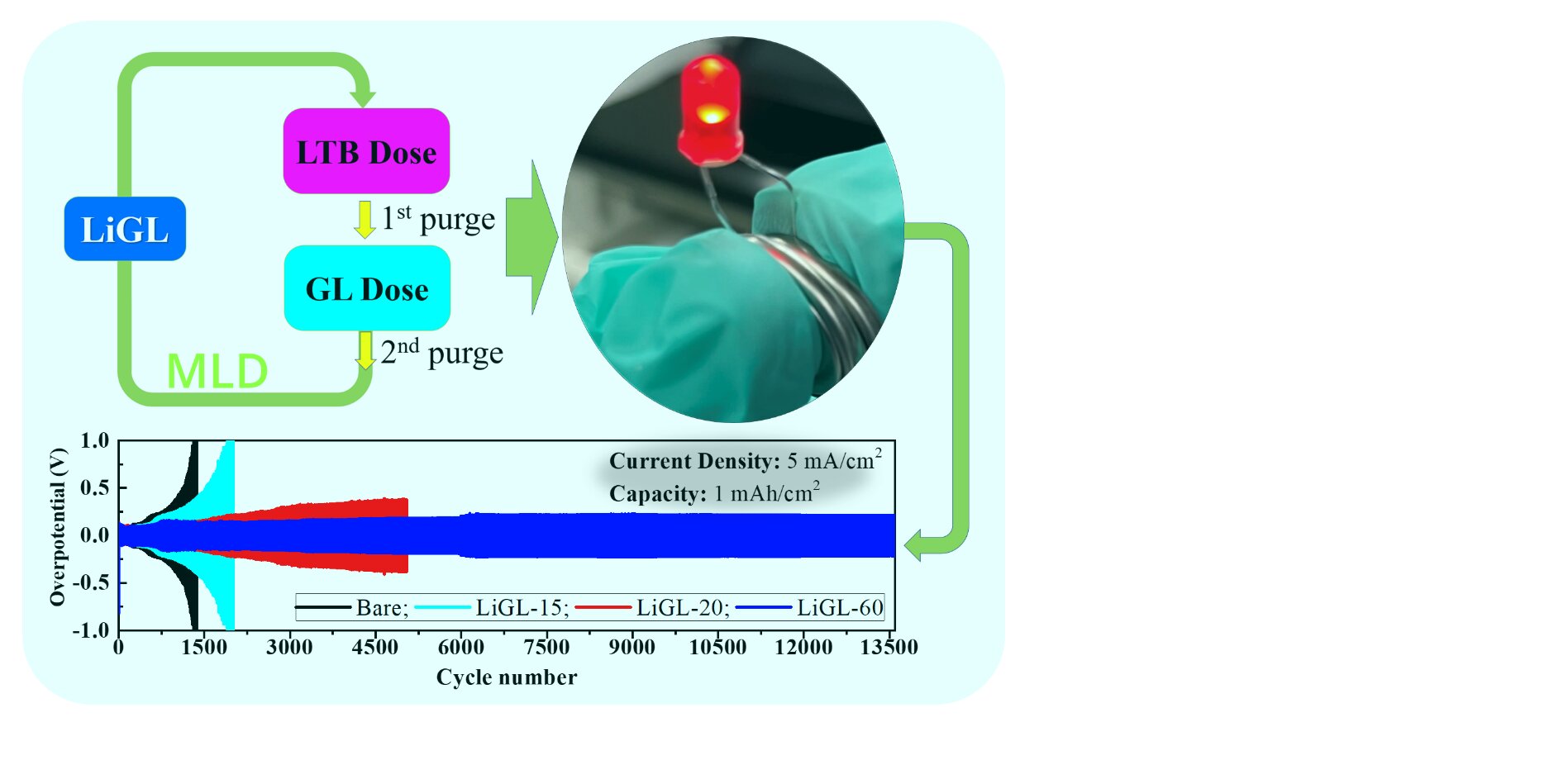Recently developed novel Li-conducting polymeric materials enabling superior lithium metal anodes
To address issues in commercializing Li metal anodes, researchers at the University of Arkansas have developed a novel lithium-containing crosslinked polymeric material, LiGL (GL = glycerol). This LiGL polymeric film exhibits exceptional properties and can effectively protect Li metal anodes from dendritic growth and SEI formation to realize Li electrodes’ long-term stable cyclability. They published their approach on September 07 in Energy Material Advances.
A variety of technical strategies has been reported to address the issues of Li anodes to date, such as three-dimensional (3-D) Li-hosting frameworks, electrolyte additives, solid-state electrolytes, and surface coatings. “Among these efforts, surface coating remains as a facile and effective route,” according to the corresponding author Xiangbo Meng, a professor in Department of Mechanical Engineering, University of Arkansas.
“Molecular layer deposition (MLD) recently has emerged as a new research thrust, which is first practiced in 2018,” Meng said. “These polymeric films, precisely synthesized via MLD, have much better flexibility over inorganic films, contributing to better protection effects and thereby better performance of Li metal anodes.”
Meng and his team have developed three MLD processes of lithicones, and studied the protective effects of these polymeric films coatings, trying to realize long-term stable cyclability with little formation of Li dendrites and SEI for the Li electrodes.
“In this work, we for the first time developed a novel lithium-containing crosslinked polymeric material, a lithicone that enables excellent protection effects over lithium (Li) metal anodes,” Meng said. “We found that the LiGL lithicone could serve as an exceptional polymeric protection film over Li metal anodes.”
According to Meng, this LiGL MLD has a decent average growth per cycle (GPC) of ~2.7 nm/cycle and shows exceptional protection effects on Li electrodes, i.e., remarkably suppressing Li dendrites and mitigating SEI formation. The computational simulations and experiments revealed that the MLD LiGL films are electrically insulating and ionically conductive.
In their study experimental data revealed that the Li electrodes coated by this LiGL lithicone could achieve a superior cycling stability, accounting for an extremely long cyclability of >13,600 Li-stripping/plating cycles without failures in Li/Li symmetric cells at a current density of 5 mA/cm2 and an areal capacity of 1 mAh/cm2. Now, the updated results have extended the cyclability to over 20,000 Li-stripping/plating cycles (over 10,000 hours or over 1 year) without failures. All these are the best cyclability reported so far in literature. Thus, these results are very promising and the MLD LiGL technology may have paved a technical pathway for addressing the issues of Li anodes.
“The properties of the LiGL coatings, such as mechanical properties and conductivities, underlie their excellent protective effects on Li metal electrodes,” Meng said. “This novel LiGL we developed represents a facile and effective solution to the existing issues of Li anodes and potentially paves a technically feasible route for lithium metal batteries.”
High-performance anode for all-solid-state lithium batteries is made of silicon nanoparticles
Xiangbo Meng et al, Molecular Layer Deposition of Crosslinked Polymeric Lithicone for Superior Lithium Metal Anodes, Energy Material Advances (2021). DOI: 10.34133/2021/9786201
Provided by
Beijing Institute of Technology Press
Citation:
Recently developed novel Li-conducting polymeric materials enabling superior lithium metal anodes (2021, December 6)
retrieved 6 December 2021
from https://techxplore.com/news/2021-12-li-conducting-polymeric-materials-enabling-superior.html
This document is subject to copyright. Apart from any fair dealing for the purpose of private study or research, no
part may be reproduced without the written permission. The content is provided for information purposes only.
For all the latest Technology News Click Here
For the latest news and updates, follow us on Google News.

